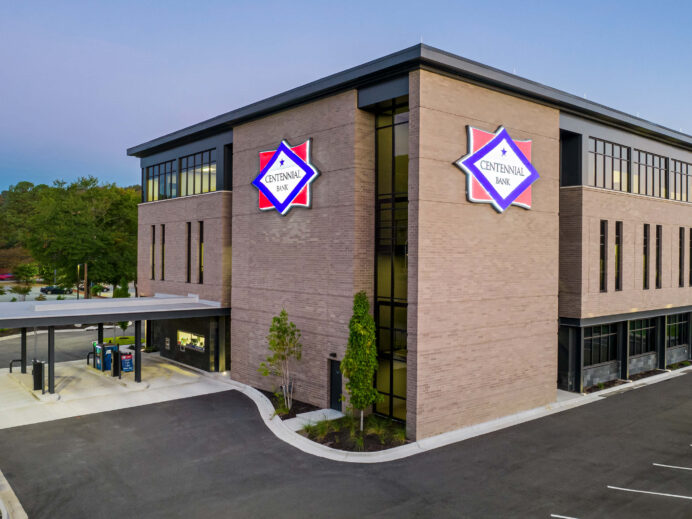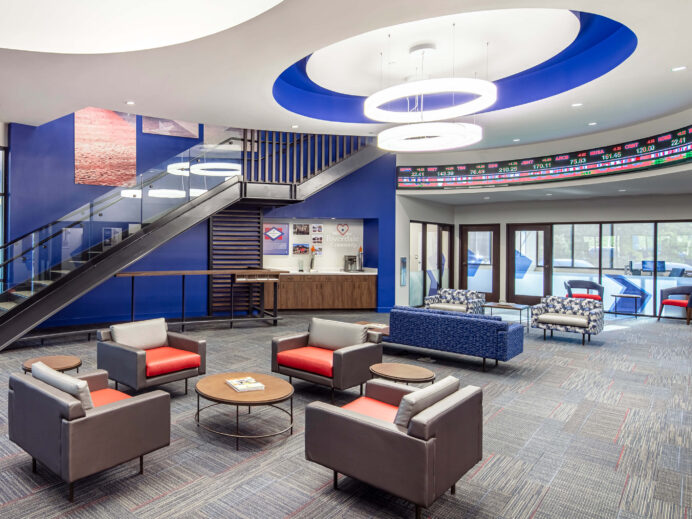
Looking for smart strategies to scale their organizations, regional mergers in banking are on the rise, especially among financial institutions that combine their community and commercial focus and significantly expand their geographic footprints into highly desirable and growing metro service areas. With merger and acquisition activity expected to pick up considerably throughout 2021, more and more banks will be facing the prospect of integrating both their brands and their branches into a cohesive customer experience that exceeds consumer expectations post-merger.
In today’s competitive environment where banks are making critical decisions about their branch networks, rebranding of branches and making critical upgrades have real world impacts. While many have predicted the death of the branch, the reality is that consumers’ most critical decisions – opening an account and building relationships – are centered around the branch. Data supports the central role of the branch in driving experience, with 92% of consumers reporting they will only open an account if there is a branch available and 66% want that branch within 15 minutes of them.
While consumers expect good experiences at the branch, newly merged banks are at the forefront of delivering that experience in a chaotic and often disruptive post-merger environment. Often underestimated in scope and scale, each individual branch has dozens of elements to address and align to (sometimes entirely new) brand standards, well past merely migrating external signage. Depending on the size of the branch network, that can be hundreds (or thousands) of distinct brand assets to align across your branch network. Considerations extend far beyond signage and logos, into palettes, carpet and fixtures and all the places that expressions of your brand exist in the branch environment.
Balancing cost and timing with quality and brand integrity is a strategic priority for all financial brands. To begin understanding the decision-making process needed to make interior rebranding a success, we’ve gathered four key considerations for strategic planning and prioritization to enhance and optimize branch experiences for customers and staff, alike.
1) Planning
Before any interior rebrand process can begin, banks must understand what they have. Each branch must undergo an asset survey and site audit with data collected, documented and organized into a cohesive and comprehensive plan. Next comes coordinating asset placement within a tagged floor plan for each site. Each location’s conditions and branch health are scored by expert analysts. Access to real-time information is critical for key stakeholders throughout the branch conversion process, including daily analysis and quality control checks.
2) Design
Following the gathering of information, financial institutions must allocate investments and conversion decisions based on current condition and performance, aligned with market opportunity. Once these decisions are made, it’s critical to understand that both staff and customers are key considerations in creating the branded experience inside the branch. The design phase includes sign family design application; site-specific brand book development; client review and approvals; and customized site-by-site program-level tracking and status reporting in real-time.
3) Implement
While most implementation focuses on critical upgrades, if there are opportunities for operational changes to enhance efficiency, this is the time to implement enhancements. On the implementation of a brand into the branch environment, financial institutions will need to coordinate architects, industrial designers, product engineers, and program experts to ensure design integrity and cost efficiency. This fully integrated process means on-site management of multiple supplier partners, continuous production risk level assessment and in-person and/or virtual reviews of progress.
4) Manage
Robust and real-time management is especially important with multiple sites across a wide network. The larger the branch network, the more complicated the branch conversion can get, driving a critical need for an updated, responsive way to manage and coordinate all brand assets – including floorplans, 3D walkthroughs, current photos – over multiple locations. Coordinating upgrades, especially those that need to be strategically timed, is critical for financial brands in branch interior rebrands following mergers & acquisitions.
Any approach to converting multiple brand networks should incorporate efficiently addressing the extreme variability in conditions while still managing regional and affiliate stakeholder approval processes. To learn more about the branch conversion process and interior rebrand conversions following mergers and acquisitions or to speak to one of our financial services and banking industry experts, email us at [email protected] or call (678) 412-6903.
Adrenaline is an experience design agency that creates and implements end-to-end branded experiences through creative and environmental design. We enhance our clients’ customer experiences across digital and physical channels, from their branding and advertising to design and technology in their spaces. After transforming an organization’s brand, Adrenaline extends it across all touchpoints — from employees to the market to in-store environments. And, we focus on serving industries that sell human experiences including financial, healthcare, sports and entertainment.



